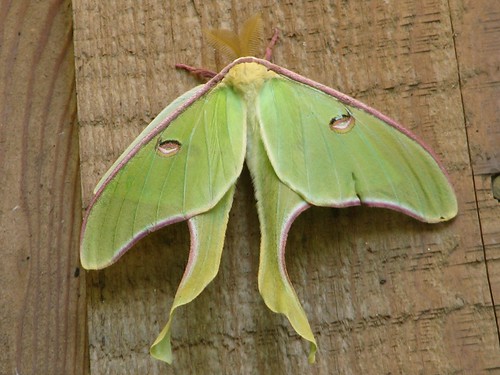
Imagine wandering through your favorite botanic garden in the early evening and catching a glimpse of the moon reflected off of something lime green that moves from flower to flower while closer to the ground the yellow glow of fireflies help illuminate the night.
It’s enough to make you feel like you’re in a Shakespearean forest.
But the lime green is really the wings that belong to what some consider the most beautiful insect – the Luna moth. Those who do catch a glimpse of this unique moth are lucky – as they are rarely seen due to their short life span.
This week, National Moth Week, is a perfect time to celebrate the Luna moth along with the approximately 160,000 other such species around the globe.
Moths belong to the same insect order as butterflies (Lepidoptera) and go through the same metamorphosis as butterflies. But they are actually more abundant, outnumbering butterflies about 10 to 1. The ecological benefits of moths are also similar – one of the most important being pollination. Though some moths are active during the day, the majority take the pollination night shift along with bats.
Fuzzier than butterflies, their hair makes them great pollinators – they pick up pollen from any flower they land on. In fact, moth-pollinated trees and other plants comprise about 10 percent of the dry forest of Costa Rica. Moth-pollinated flowers are typically pale or white and include night-blooming jasmine, evening primrose, yucca species and Madonna lily.
Enjoy the week of the moth by:
- Try mothing! Moth week offers everyone an opportunity to become a citizen scientist and contribute scientific data about moths. Through partnerships with major online biological data depositories, National Moth Week participants can help map moth distribution and provide needed information on other life history aspects around the globe. Find an event near you.
- Plant sweet-smelling night blooming flowers in your garden, such as evening primrose or one of the many yucca species. Don’t forget that moths are pollinators, too.
- Take an evening stroll through your garden to see who you might find flitting from flower to flower. Try snapping a photograph and see if you can determine the species.
- If you happen to be in the Upper Peninsula of Michigan, check out the Hiawatha National Forest’s Au Trail Songbird Trail, which features evening primrose.
- Visit one of the Forest Service’s many Wildflower Viewing Areas, and look for moths among the abundant native flowers.

